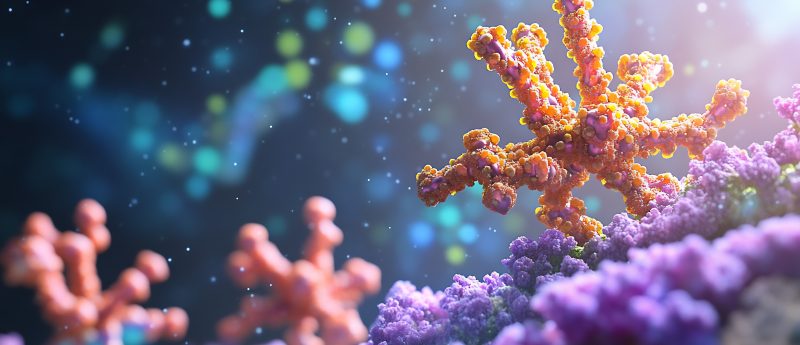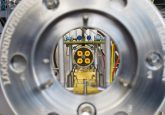An overview of plasma protein binding

In this expert column, Dr Wayne Wright (Wright Bioanalytical Consultancy Services Ltd; London, UK) explains the concept, importance and methods of measuring plasma protein binding (PPB) in drug discovery and development. He covers how drugs interact with plasma proteins, the impact of binding on drug efficacy and safety, the factors influencing binding, and the analytical techniques—especially equilibrium dialysis—used to quantify the free versus bound drug concentrations across species.
PPB is defined by the degree to which a drug molecule binds to proteins within the blood plasma. The most common proteins in plasma by concentration are albumin, Globulins, Fibrinogen and acid alpha-1-acid glycoprotein (AGP). Albumin accounts for around 60% (50g/l) of the total protein content whilst AGP accounts for roughly 1%. Albumin can therefore be used as a surrogate for plasma to define and compare PPB.
PPB is important in drug discovery as it affects the free concentration (i.e. drug not bound to plasma proteins) and therefore dose prediction. It is this free concentration that elicits pharmacological action. This is known as the free drug hypothesis. Therefore, the accurate measurement of the unbound drug concentration is a very important parameter in the selection of drug candidates and dose levels. In drug discovery and development, PPB of a drug molecule is performed across species to provide an early prediction and understanding of dose, human pharmacokinetics, pharmacodynamics, toxicity and safety risk for co-administered drugs.
For a given plasma protein load, the physicochemical properties of the drug molecules (e.g. lipophilicity, pKa, polar surface area), are responsible for the differences in binding affinities. In general, acidic compounds are preferentially bound to plasma proteins followed by neutral then basic compounds. This is driven by affinity to basic and polar residue binding sites within the serum albumin. Basic compounds have an affinity for the acidic AGP. In general, basic compounds will bind preferentially to negatively charged phosphate groups of phospholipids in tissue cell membrane. Other factors that may influence degree of binding are changes to three-dimensional structure of the serum albumin, drug-drug interaction, disease state and pH changes within a biological system.
There are several methods for determining PPB. These include but are not limited to: microdialysis, ultra-centrifugation, ultra-filtration, HSA column chromatography, equilibrium dialysis and immobilized artificial membranes. Each method has its share of advantages (e.g. ease of use, speed), as well as disadvantages including nonspecific binding to the tubings, cartridges and filter beds, sample evaporation and limits of detection.
Equilibrium dialysis is the gold standard for PPB due to its ease of use and the low non-specific binding because of the chemically inert dialysis block. The major disadvantage is time to achieve equilibrium (4-6hrs). Time to equilibrium refers to the length of time taken for which passive diffusion approaches zero i.e. where no further transport of drug across the membrane occurs. The RED device is a two-compartment system separated by a semi-permeable membrane. The semi-permeable has a molecular weight cut-off which allows for the passive diffusion of drug molecules from one compartment to the other whilst preventing the larger plasma proteins from doing the same. One compartment usually contains drug spiked in plasma and the other compartment typically contains a buffer – generally phosphate-buffered saline at physiological pH 7.2. This sets up a diffusion gradient where the drug moves from a high to a low concentration. The device is mounted on a shaker with a time to equilibrium of typically 4–6hrs with constant shaking. Aliquots taken from the plasma and buffer compartments can then be analyzed using HPLC MS/MS to measure total (Ct) and free or unbound drug concentration (Cu) respectively.
Within drug discovery, a high throughput HPLC method employing a generic gradient coupled with a C18 column chemistry is generally used, with modifications to the aqueous mobile phase if needed to enhance the ionization efficiency of the analyte of interest. As an example, 0.1% formic acid(aq) may be the aqueous mobile phase of choice for basic compounds utilizing positive-mode ionization. This contrasts with 10mM ammonium acetate for acidic compounds utilizing negative-mode ionization. The organic mobile phase is generally acetonitrile or methanol.
Prior to the conduct of the PPB experiment, an analytical method for the detection and quantification of an analyte interest is developed. This involves the infusion and optimization of the drug molecule using the available instrumentation e.g. a triple quad mass spectrometer. It is always a good idea to select multiple product ions from the precursor ion as one may offer a better chromatographic solution than the other. PPB is often done at two concentration levels (low and high) representing expected dose levels. Where PPB is high (≥ 95%), the free concentration of the drug in the buffer – especially at the low concentration levels – is often difficult to measure and quantify. This is of course compound specific. Therefore, the sample volume, extraction technique and instrument sensitivity may need to be optimized to accurately measure low levels of drugs in the buffer.
To accurately measure and compare drug levels individually in buffer and plasma compartments post equilibrium dialysis, matrix matching is usually adopted to ensure instrument response is consistent across the different matrices within the system. As an example, a 25µL aliquot of buffer sample is diluted with 25µL of control blank plasma and a 25µL aliquot of plasma sample is diluted with 25µL of control blank buffer. The resulting sample is then thoroughly mixed, and the analyte of interest extracted. The resulting analyte concentration is then determined from a calibration line made up with a 1:1 ratio of control buffer: plasma.
The Ct in plasma at equilibrium is a sum of the bound concentration (Cb) and the Cu i.e., Ct=Cb+Cu. PPB is therefore given as a fraction bound or percentage of the bound concentration (PPB) to the total concentration in plasma, i.e., fraction bound Cb/ Ct and percentage bound (Cb/ Ct) x 100. Alternatively, the bound fraction and percentage bound can be given as (1-(Cu/ Ct) and (1-(Cu/ Ct) x 100, respectively. The free fraction and percentage unbound can be given as Cu/ Ct and (Cu/ Ct) x 100, respectively. As another option, the free fraction and percentage unbound can be given as (1-(Cb/ Ct) and (1-(Cb/ Ct) x 100, respectively. The resulting PPB data across the different species can then be assessed to ascertain potential dose related efficacy and toxicity to aid predictions in humans.
PPB remains a critical parameter in drug discovery and development, providing key insights into a drug’s pharmacokinetic and pharmacodynamic profile across species. Accurate determination of free versus bound drug concentrations influences not only dose prediction and efficacy, but also safety assessment and inter-species translation. With the availability of a variety of analytical techniques—each with its own advantages and limitations, dialysis continues to stand out as the gold standard due to its robustness and reliability. As drug discovery advances and demands grow for more predictive models, the integration of precise PPB assessments will remain essential for informed decision-making, optimal candidate selection and successful progression into clinical development.
Disclaimer: the opinions expressed are solely that of the authors and do not express the views or opinions of their employers, Bioanalysis Zone or Taylor & Francis Group.
About the author:
 Dr Wayne Wright is the Director and Founder of Wright Bioanalytical Consultancy Services Ltd (London, UK), bringing over two decades of experience in the pharmaceutical industry. As a seasoned Consultant Bioanalyst, Dr Wright spent 20 years at GlaxoSmithKline (GSK; London, UK), where he honed his expertise in bioanalytical science and regulatory compliance. Originally from Jamaica, he completed his PhD at the University of Stratchclyde (Glasgow, Scotland) in 2023, further strengthening his scientific credentials and commitment to advancing analytical excellence. Through his consultancy, Dr Wright now supports organizations with high-quality, science-driven solutions and training in ICH M10 compliance, method development, validation, sample analysis, PPB, HPLC- MS/MS, report and protocol review for small molecules, metabolites and biomarkers for preclinical and clinical studies.
Dr Wayne Wright is the Director and Founder of Wright Bioanalytical Consultancy Services Ltd (London, UK), bringing over two decades of experience in the pharmaceutical industry. As a seasoned Consultant Bioanalyst, Dr Wright spent 20 years at GlaxoSmithKline (GSK; London, UK), where he honed his expertise in bioanalytical science and regulatory compliance. Originally from Jamaica, he completed his PhD at the University of Stratchclyde (Glasgow, Scotland) in 2023, further strengthening his scientific credentials and commitment to advancing analytical excellence. Through his consultancy, Dr Wright now supports organizations with high-quality, science-driven solutions and training in ICH M10 compliance, method development, validation, sample analysis, PPB, HPLC- MS/MS, report and protocol review for small molecules, metabolites and biomarkers for preclinical and clinical studies.
Our expert opinion collection provides you with in-depth articles written by authors from across the field of bioanalysis. Our expert opinions are perfect for those wanting a comprehensive, written review of a topic or looking for perspective pieces from our regular contributors.
See an article that catches your eye? Read any of our Expert Opinions for free.






